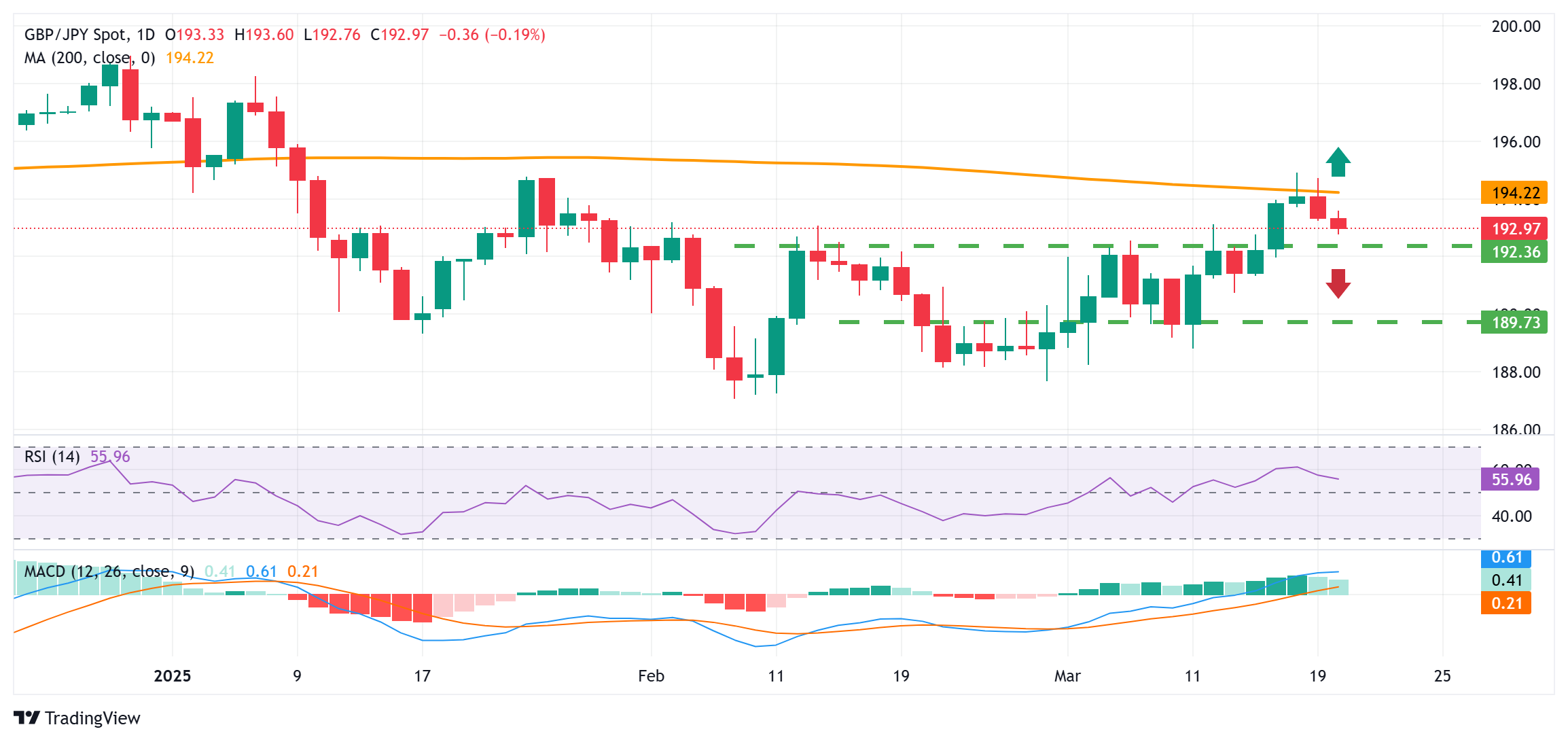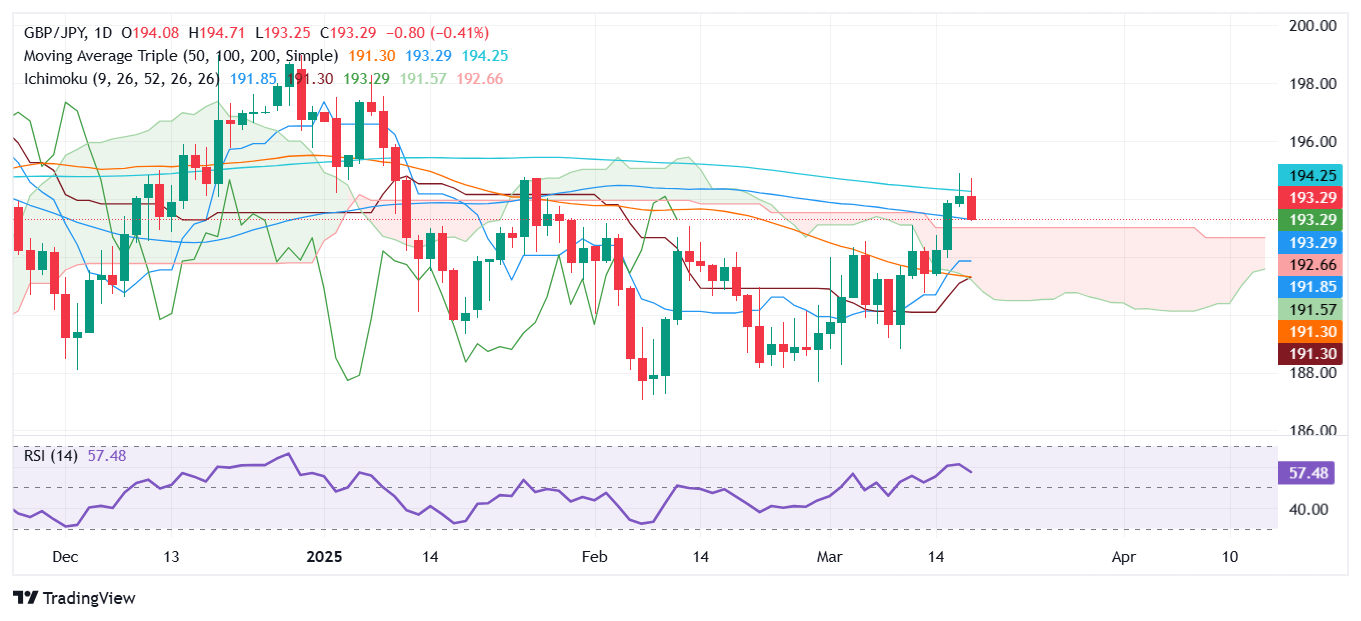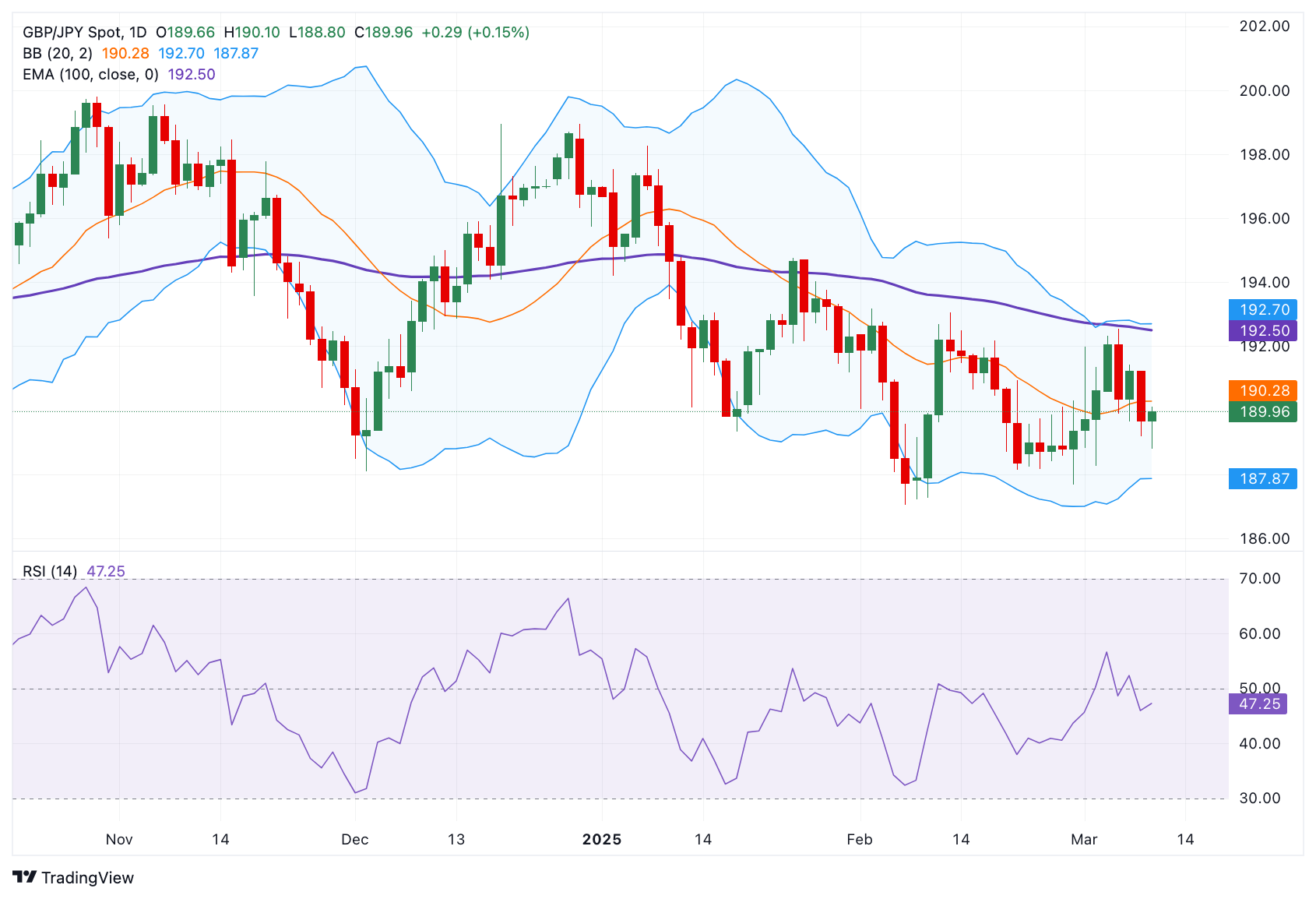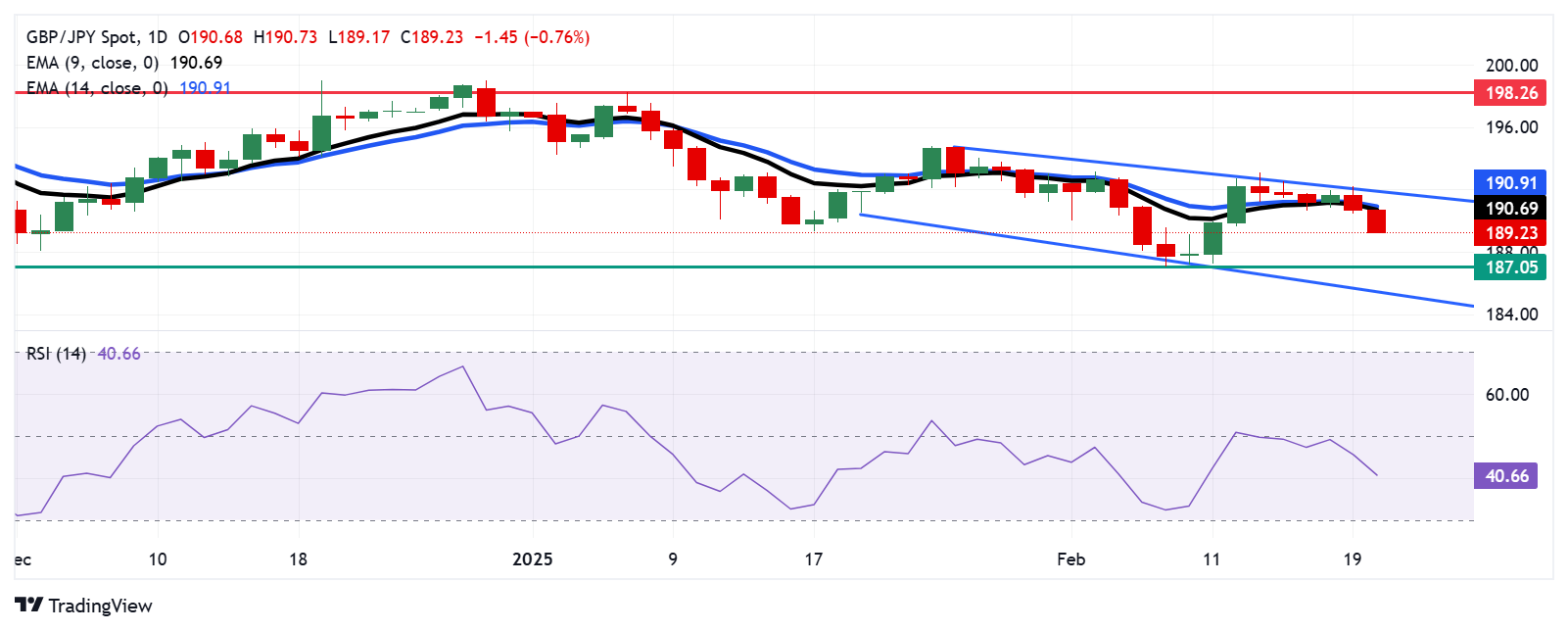- Analytics
- News and Tools
- Quotes
- Chart and quotes for GBPJPY
CFD Trading Rate Great Britain Pound vs Japanese Yen (GBPJPY)
| Date | Rate | Change |
|---|
Related news
-
20.03.2025 04:54GBP/JPY Price Forecast: Slides below 193.00 ahead of BoE; set up warrants caution for bears
- GBP/JPY extends the overnight pullback from the vicinity of over a two-month high.
- BoJ rate hike bets and the flight to safety underpin the JPY, exerting some pressure.
- A mixed technical setup warrants caution for bulls ahead of the BoE policy decision.
The GBP/JPY cross attracts sellers for the second successive day on Thursday and extends this week's retracement slide from the vicinity of the 195.00 psychological mark, or over a two-month high. Spot prices weaken further below the 193.00 round figure during the Asian session and seem vulnerable to slide further amid a broadly stronger Japanese Yen (JPY).
Expectations that strong wage growth could boost consumer spending and contribute to rising inflation give the Bank of Japan (BoJ) headroom to keep hiking interest rates. Apart from this, the uncertainty over US President Donald Trump's trade policies and geopolitical risks underpin the safe-haven JPY, which, in turn, is seen exerting pressure on the GBP/JPY cross. The British Pound (GBP), on the other hand, struggles to gain any traction as traders opt to wait for the Bank of England (BoE) decision.
From a technical perspective, spot price earlier this week struggled to find acceptance above the very important 200-day Simple Moving Average (SMA) and the subsequent fall could be seen as a key trigger for bearish traders. That said, oscillators on the daily chart are still holding in positive territory. Adding to this, the recent breakout through the 192.50 horizontal resistance warrants some caution before positioning for any further depreciating move heading into the key central bank event risk.
In the meantime, the aforementioned resistance breakpoint could protect the immediate downside, below which the GBP/JPY cross could accelerate the slide towards the 192.00 mark en route to the 191.35-191.30 support zone. Some follow-through selling has the potential to drag spot prices below the 191.00 round figure, towards the next relevant support near the 190.45-190.40 area en route to the 190.00 psychological mark and the 189.70-189.65 region.
On the flip side, any positive move might now confront resistance near the 194.00 round-figure mark ahead of the 200-day SMA, currently pegged around the 194.30 region. This is followed by the 194.90 region, or a multi-month peak touched earlier this week, which if cleared decisively should pave the way for additional gains. The GBP/JPY cross might then climb to the 196.00 mark en route to the 196.40 horizontal zone before aiming to reclaim the 197.00 round figure for the first time since January.
GBP/JPY daily chart

Economic Indicator
BoE Interest Rate Decision
The Bank of England (BoE) announces its interest rate decision at the end of its eight scheduled meetings per year. If the BoE is hawkish about the inflationary outlook of the economy and raises interest rates it is usually bullish for the Pound Sterling (GBP). Likewise, if the BoE adopts a dovish view on the UK economy and keeps interest rates unchanged, or cuts them, it is seen as bearish for GBP.
Read more.Next release: Thu Mar 20, 2025 12:00
Frequency: Irregular
Consensus: 4.5%
Previous: 4.5%
Source: Bank of England
-
19.03.2025 22:55GBP/JPY Price Forecast: Retreats below 193.50 after struggling near 195.00
-
19.03.2025 05:57GBP/JPY extends the rally to near 194.50 as BoJ keeps interest rate steady
-
11.03.2025 07:01GBP/JPY Price Forecast: Bearish outlook remains in play below 190.00
-
10.03.2025 06:10GBP/JPY tumble to near 190.60 amid BoJ rate hike prospect
-
06.03.2025 07:38GBP/JPY declines to near 191.50 amid hawkish outlook for BoJ’s policy
-
27.02.2025 13:32GBP/JPY jumps to near 189.60 ahead of Trump-Starmer meet in Washington
-
21.02.2025 07:15GBP/JPY jumps above 190.50 after upbeat UK Retail Sales data
-
20.02.2025 05:11GBP/JPY Price Analysis: Falls toward 189.00 after breaking below nine-day EMA
-
19.02.2025 07:59GBP/JPY holds losses near 191.50 following UK inflation data
-
18.02.2025 07:31GBP/JPY holds gains around 191.50 following UK employment data
-
17.02.2025 07:52GBP/JPY Price Analysis: Finds support around nine-day EMA at 191.00
© 2000-2025. All rights reserved.
This site is managed by Teletrade D.J. LLC 2351 LLC 2022 (Euro House, Richmond Hill Road, Kingstown, VC0100, St. Vincent and the Grenadines).
The information on this website is for informational purposes only and does not constitute any investment advice.
The company does not serve or provide services to customers who are residents of the US, Canada, Iran, The Democratic People's Republic of Korea, Yemen and FATF blacklisted countries.
Making transactions on financial markets with marginal financial instruments opens up wide possibilities and allows investors who are willing to take risks to earn high profits, carrying a potentially high risk of losses at the same time. Therefore you should responsibly approach the issue of choosing the appropriate investment strategy, taking the available resources into account, before starting trading.
Use of the information: full or partial use of materials from this website must always be referenced to TeleTrade as the source of information. Use of the materials on the Internet must be accompanied by a hyperlink to teletrade.org. Automatic import of materials and information from this website is prohibited.
Please contact our PR department if you have any questions or need assistance at pr@teletrade.global.



















